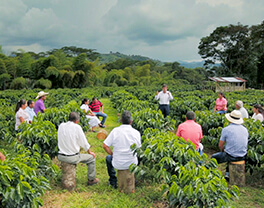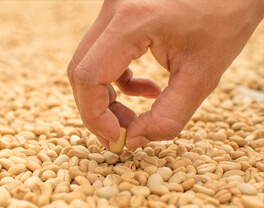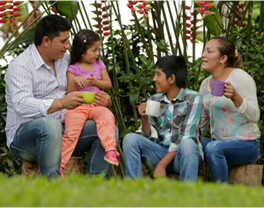The environmental dimension
focuses on 6 topics:
Water
As a very valuable and scarce resource, we work very hard to protect it through conservation of sources and riverbeds, as well as decontamination, adequate discharges and less consumption.
Land
Without land there is neither life nor coffee. At the FNC, we are very aware of that and work closely with coffee farmers to conserve and protect land and soil.
Biodiversity
Colombia is one of the 17 countries classified as “mega diverse.” At the FNC, we work to keep it that way by connecting and conserving our country’s great flora and fauna diversity.
Waste
Both in rural areas and at offices, we work constantly to reduce the waste we generate, mainly through more rational use of resources, smart purchases, reuse, recycling and reduction in general.
Energy
We work on reducing our energy consumption, especially that from non-renewable sources, and finding more sustainable alternatives, like solar power
Emissions
Greenhouse gas emissions are one of the main causes of climate change, so we work on finding solutions to reduce them.
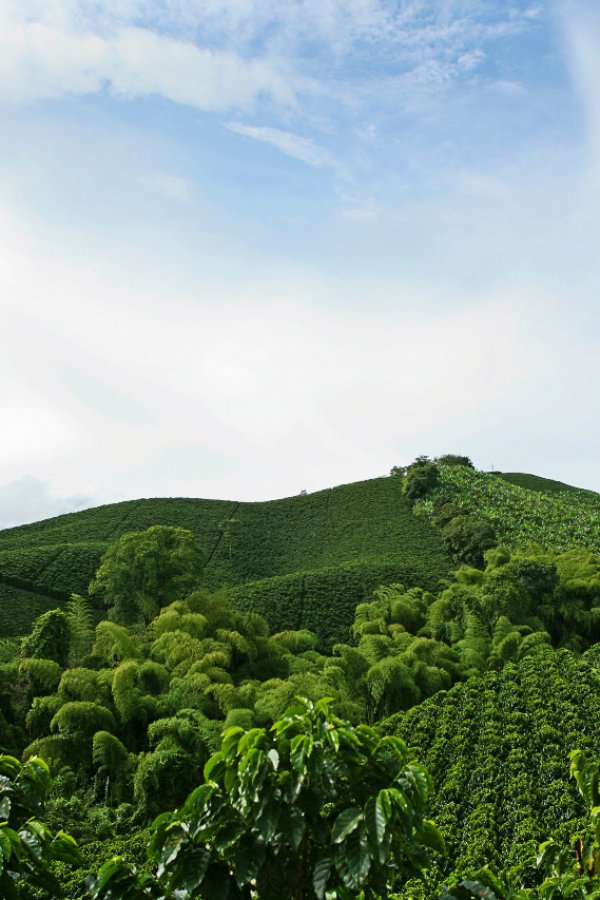
Highlights of our environmental efforts:
Cenicafé, our scientific research arm, has contributed significantly to cleaner and more environmentally friendly coffee farming through development of:
- Disease-resistant varieties and promotion of integrated management practices that avoid use of fungicides, pesticides and herbicides
- Coffee wet milling technologies: tub tank, Becolsub, and Ecomill®, thanks to which we are able to:
- save 10 billion liters of water per year.*.
- reduce or even eliminate waste.
-In the first quarter of 2018, over 30% of the coffee wet mills were already ecological and over 50% were in transition of adopting this technology. *(according to a sampling on 66,000 farms conducted between 2016 and 2017).
-According to a rigorous study under the Nationally Appropriate Mitigation Action (NAMA) concept, Colombian coffee farming captures 5.2 times the carbon it emits, a very eloquent figure in environmental matters.
-We are ISO 14001:2015 (Environmental Management) certified.
-Buencafé, the freeze-dried coffee factory, has achieved important environmental results: low consumption of natural and energy resources (use of rainwater for industrial processes and a pilot project of solar panels), low emissions and wastewater, and appropriate waste management, which includes using all generated coffee grounds as fuel for boilers.
We focus on the following Sustainable Development Goals (SDG):
ENVIRONMENTAL PROGRAM
We are aware of the importance of natural resources and biodiversity for sustainability of the coffee production chain and therefore Colombian coffee farmer families’ well-being. That’s why the Environmental Program is a crucial part of our value strategy. To contribute to their well-being, they need sustainable and productive production systems that are resilient to climate variability, but also designed and managed to be productive. Recovery, conservation and protection of natural resources, reduced impact of coffee farming on ecosystems, and lower impact of climate variability on coffee production are all needed.
To achieve this, we have developed an integrated river basin management strategy to combine coffee crops with agroforestry arrangements, forest plantations and hedges.
This is complemented by implementing a management and planning approach that favors conservation and care of native forests and river basins, connectivity of biodiversity habitats in coffee regions, and sustainable production practices that help reduce water use and pollution, make rational use of agrochemicals, reduce organic and inorganic waste, and conserve soil.
Through these actions, we have proved that it is possible to produce coffee in a sustainable way and in harmony with natural resources, while contributing to well-being of coffee farmers and sustainability of ecosystems.
Developed since 2005 through a public-private partnership of the FNC with the German government (via KfW) and the Colombian government (through the Ministry of Agriculture and Rural Development), as of mid-2020 the program has impacted 8,339 coffee growers in 59 municipalities of 8 coffee departments.
Key facts:
10,577
hectares of forest plantations and agroforestry systems were established with small farmers between 2015 and 2018.
4,417
hectares of conserved and protected river basins.
3,052
hectares of biodiversity conservation corridors in the coffee region.
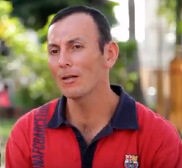
Manos al Agua-Intelligent Water Management (IWM)
This is perhaps the largest project focused on integrated water resource management that a coffee-producing country has ever implemented.
With an investment of over 25 million euros through a public-private partnership (in which the Dutch and Colombian Governments, Nestlé, Nespresso and the University of Wageningen took part), this project, implemented by the FNC with the technical and scientific support of Cenicafé, impacted over 11,600 coffee-growing families in 25 river basins of Antioquia, Caldas, Cauca, Nariño and Valle del Cauca during its six realization years (2013-2018).
The coffee farms and the entire intervention area showed better water management and greater capacity of the communities to make decisions on climate variability.
92% of the 25 river basins improved water quality, of which 40% achieved “good” quality downstream from the intervention zone.
For its scope and achievements, IWM received important awards, such as the 2018 Sustainability Award of the Specialty Coffee Association (SCA) in the USA, in the category of Sustainable Projects.
BEST PRACTICE - WATER
Ecomill
Continued development of ecofriendly methods (such as pulping without water or dry transport of pulp) and ecological wet milling technologies (such as tub tank, Becolsub and Ecomill®) has allowed Colombian coffee farming to save more and more water and substantially reduce pollution, including adequate disposal of byproducts and wastewater treatment.
From consuming up to 40 liters of water per kg of dry parchment coffee (dpc) in the traditional method, water consumption has dropped to 0.5 liters per kg of dpc with technologies such as Ecomill®.
Key facts:
850
million liters of water are saved per year with eco-friendly wet milling technologies
0.5
liters of water per kg of dpc are consumed by using the Ecomill® technology
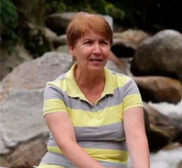
BEST PRACTICE - WASTE
Solid waste collection
Another issue that coffee growers face is pollution by solid waste such as plastics and other types of packaging, since there are no trash collection services in rural areas. For this reason, it is common for waste to end up polluting nature or to be burned by farmers who are not aware of the impact this has on ecosystems and their health. To mitigate this problem, communities have been made aware of the importance of installing classification points and solid waste collection, along with training activities for learning to reuse it, turning it into handicrafts or other useful objects.
BEST PRACTICE - BIODIVERSITY
Birdwatching groups
As an integral part of our environmental awareness-raising activities with communities, we also promote and help create birdwatching groups, which organize field days in which adults and children learn about different migratory and native birds in coffee regions. These activities increase connection of communities with nature and awareness about importance of their actions in conservation of flora and fauna in the ecosystems.
BEST PRACTICE
Food safety
In addition to forestry and environmental activities, the FNC’s Environmental Program has also implemented a Food and Nutrition Safety component for improving families’ well-being. Rather than delivering food, it aims at understanding current habits to then focus its actions on raising awareness/training to improve decision-making in production, handling, preparation, and consumption of food, incorporating good agricultural, livestock and hygiene practices.
As a result, consumption of high biological value proteins, dairy products, and fresh vegetables and fruits has significantly increased, mainly from the group of vegetables and legumes grown in kitchen gardens.
In addition, 2,050 families have received water filters with which they have access to safe water.
BEST PRACTICE - ENERGY & EMISSIONS
The Tolima Coffee Growers Committee HQ has a new solar panel plant on the roof.
With this photovoltaic system, the Departmental Committee generates approximately 147,000 kWh of energy per year, thanks to the 300 panels installed by Celsia on a 582 m2 area, ceasing to emit 56 tons of CO2 per year.
It will serve 62% of its average consumption, which means that more than half of its energy use will now be with non-conventional renewable energy, also contributing to the care of the environment. Furthermore, thanks to the outsourcing of the energy produced at its headquarters, the Committee will have an economic compensation that will be deducted from the billing of the energy service.
“With our photovoltaic solar power plant, we want to show the more than 61 thousand coffee grower families in Tolima that adapting to technology and being environmentally sustainable is possible. In this case, the example begins with the coffee growers’ house and we hope that they adopt good conservation practices in their coffee companies, so that we can all take care of the environment, natural resources, and be more productive and profitable “, stated Gildardo Monroy Guerrero, Executive Director of the Departmental Committee of Coffee Growers of Tolima.
Find out what the other companies of our coffee family are doing to protect the environment:
BEST PRACTICE - JUAN VALDEZ
Don’t break the cycle
Juan Valdez contributes to caring for the environment through its “Reuse your cup” campaign, with which the brand invites consumers at the stores to reuse cups and therefore reduce plastic consumption and environmental impacts, besides saving money in each transaction.
Juan Valdez makes efforts to recycle the cups used at the stores through its integrated solid waste management program “Don’t Break the Sustainability Cycle,” managing so far to recover 6% of all used cups.
BEST PRACTICE - BUENCAFÉ
Coffee grounds: more than waste
“Grounds” are the waste obtained from coffee processing, for example, in freeze-drying or extraction. However, since the 1990s, the tons of grounds generated by operations of the Buencafé freeze-dried coffee factory are no longer considered waste, but an important resource.
Their use for producing fertilizers and animal feed, extracting oil or generating steam as energy source has been studied, the latter resulting the most thorough and adaptable to several production processes of this plant.
Thanks to burning 100% of grounds, it is not only possible to ensure operations. It has reduced environmental impacts by avoiding use of fossil fuels to generate energy, reducing greenhouse gas emissions, and preventing this waste from ending up in landfills.



